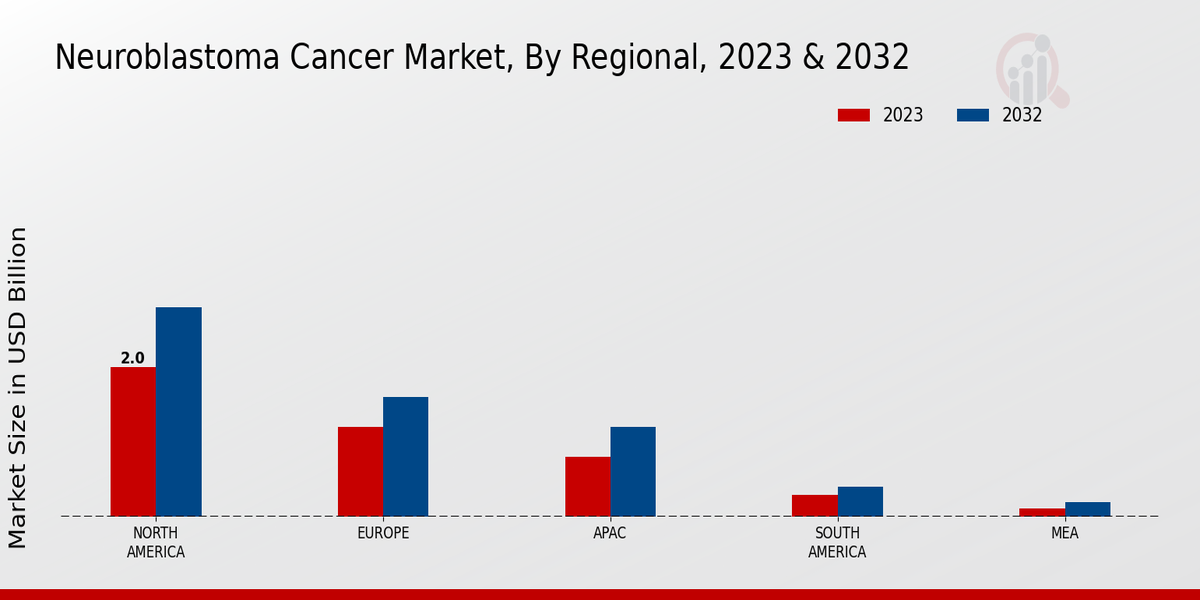Market Growth Projections
The Global Neuroblastoma Cancer Market Industry is projected to experience substantial growth in the coming years. With an estimated market value of 4.76 USD Billion in 2024, the industry is on a trajectory towards reaching 7.21 USD Billion by 2035. This growth is indicative of the increasing demand for effective treatment options and the ongoing advancements in research and technology. The anticipated compound annual growth rate (CAGR) of 3.84% from 2025 to 2035 further emphasizes the market's potential for expansion. As stakeholders continue to invest in innovative solutions and improve patient outcomes, the neuroblastoma market is poised for a promising future.
Increased Research Funding
The Global Neuroblastoma Cancer Market Industry benefits from increased research funding aimed at understanding and treating this complex disease. Government and non-profit organizations are allocating substantial resources to support clinical trials and innovative research initiatives. For example, the National Cancer Institute has prioritized neuroblastoma research, leading to breakthroughs in early detection and treatment strategies. This influx of funding not only fosters scientific advancements but also encourages collaboration among researchers and institutions. As a result, the market is likely to experience growth, with a projected compound annual growth rate (CAGR) of 3.84% from 2025 to 2035, reflecting the ongoing commitment to combatting neuroblastoma.
Growing Awareness and Advocacy
Growing awareness and advocacy for neuroblastoma are pivotal drivers of the Global Neuroblastoma Cancer Market Industry. Non-profit organizations and advocacy groups are actively working to educate the public about the disease, its symptoms, and the importance of early diagnosis. Campaigns aimed at raising funds for research and supporting affected families are gaining traction, leading to increased public engagement. This heightened awareness is likely to result in earlier diagnoses and improved treatment outcomes, thereby expanding the market. As more stakeholders become involved, the industry is positioned for growth, with a focus on enhancing patient care and support services.
Rising Incidence of Neuroblastoma
The Global Neuroblastoma Cancer Market Industry is witnessing a notable increase in the incidence of neuroblastoma, particularly among children under the age of five. This rise is attributed to various factors, including genetic predispositions and environmental influences. According to recent data, neuroblastoma accounts for approximately 7% of all childhood cancers, which translates to thousands of new cases annually. As awareness grows and diagnostic techniques improve, more cases are identified, driving the market's expansion. The projected market value for 2024 is estimated at 4.76 USD Billion, reflecting the urgent need for effective treatment options and research funding.
Advancements in Treatment Modalities
Innovations in treatment modalities are significantly influencing the Global Neuroblastoma Cancer Market Industry. Recent developments in targeted therapies, immunotherapy, and personalized medicine have shown promise in improving patient outcomes. For instance, the introduction of monoclonal antibodies and CAR T-cell therapies has revolutionized treatment approaches, leading to higher survival rates. As these therapies gain regulatory approvals and become more widely available, the market is expected to grow. The anticipated market value of 7.21 USD Billion by 2035 underscores the potential for these advancements to reshape treatment paradigms and enhance the quality of care for neuroblastoma patients.
Global Collaborations and Partnerships
Global collaborations and partnerships among pharmaceutical companies, research institutions, and healthcare providers are shaping the Global Neuroblastoma Cancer Market Industry. These alliances facilitate the sharing of knowledge, resources, and expertise, which is crucial for advancing research and developing new therapies. Collaborative efforts, such as multinational clinical trials, enable the testing of innovative treatments across diverse populations, enhancing the understanding of neuroblastoma. Such partnerships are instrumental in accelerating the drug development process and bringing new therapies to market. The synergy created through these collaborations is expected to drive market growth, ensuring that advancements in neuroblastoma treatment are accessible worldwide.






















